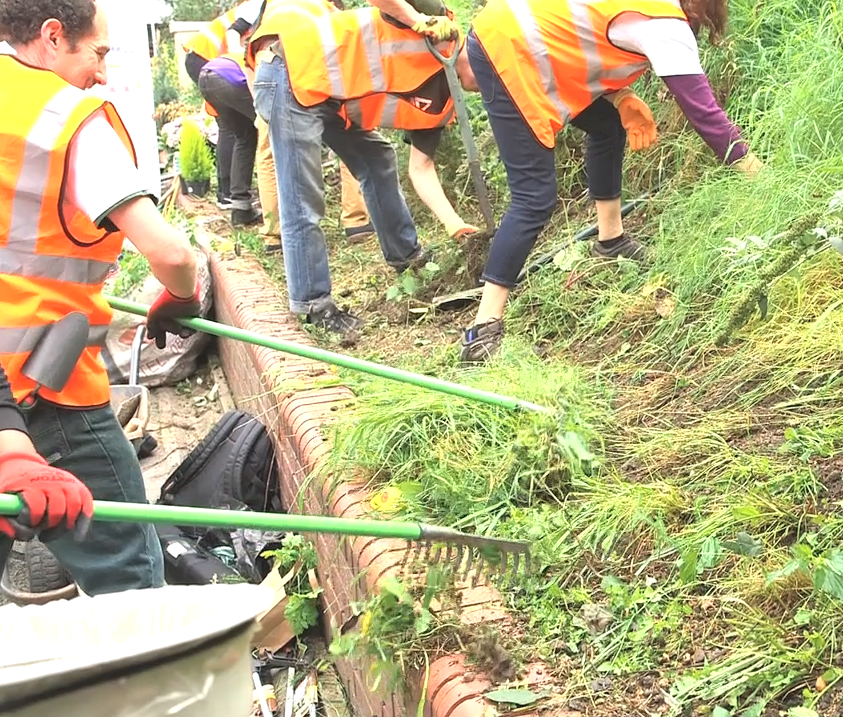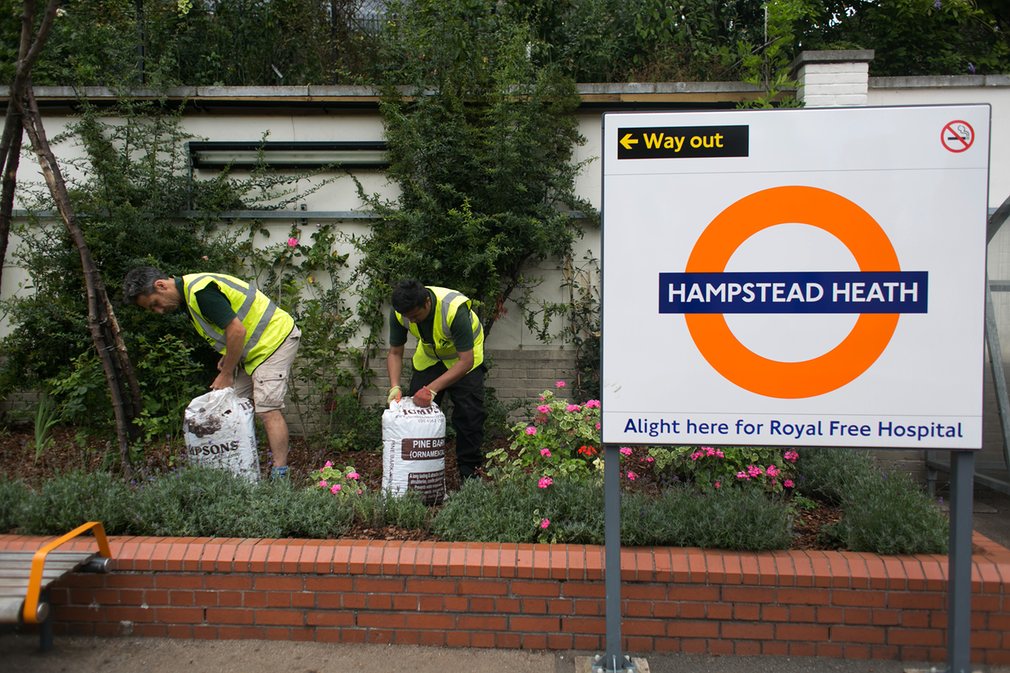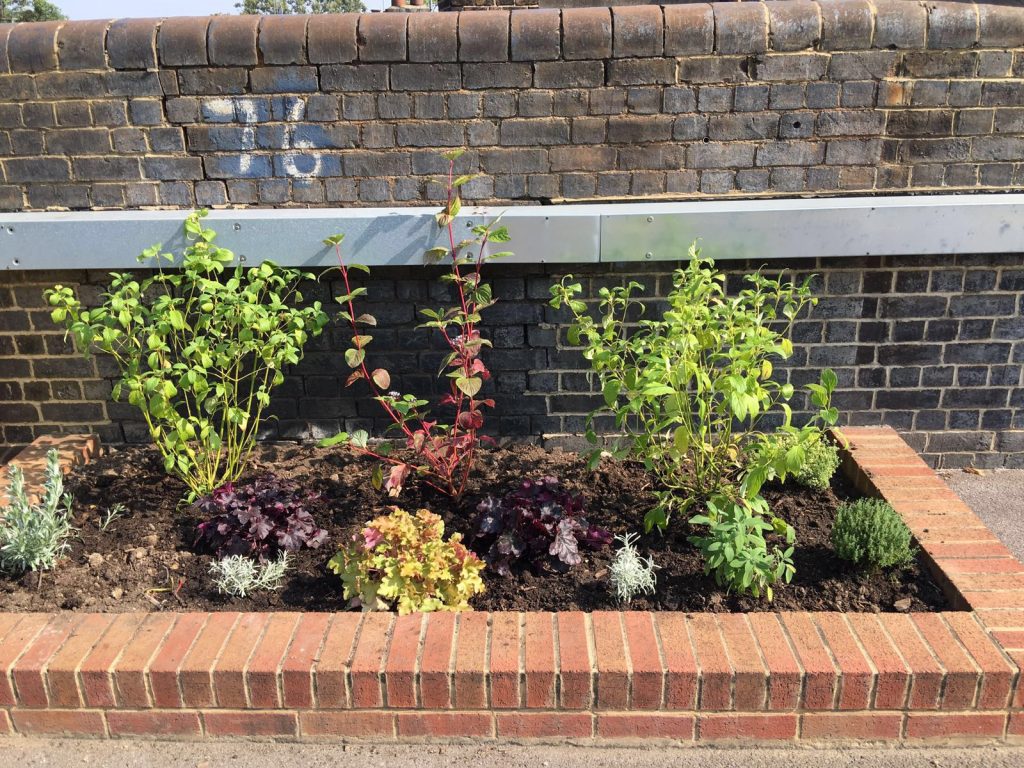
A short while ago, we caught up with Luke Jones, Project Manager of Energy Garden, to talk about the Energy Garden project, what it is, and how it is helping bring colour and life to some of London's busiest areas. Check out our interview below!
Our interview with Energy Garden
1. What would you say the main aim of the Energy Garden project is?
Energy Garden aims to bring communities together using the power of community gardening and community energy. We install environmental infrastructure and small renewable energy systems on the platforms of the London Overground and hand them to the local community. By doing this we are re-invigorating the civic pride that used to be commonplace in the communities around these public spaces.
2. The focus of the Energy Garden project is to provide on-site renewable energy for small scale station amenities. How do you work towards this?
We install lots of small measures in order to do this. For instance, at Brondesbury Park and at some other locations it was impossible to get mains plumbing that could run the length of the platform. We installed solar pumps to pressurise the water collected from rain harvesting. We are about to install a solar-powered mobile phone charging unit at another station, and some solar powered public lights at another.
3. Part of your work looks to transform London Overground stations into thriving gardens. How important are these gardens to the health and well-being of commuters?
They’re really important. In fact, a recently forgotten piece of history is the fact that stations used to be focal points for the local community. It was quite common to see gardening competitions and allotments on or around the stations which were contributed to by everyone in the local area. This was particularly the case in the bygone era when it was quite normal to know your local station manager as an important member of the community.
It’s important for our wellbeing to have access to these areas, particularly in London where many people have limited contact with ‘quality’ outdoor space. By developing public transport infrastructure we are able to bring a little bit of green into people’s daily lives. If people even stop for just that one extra second on their way home to admire a living wall or a tub full of veg, we’ve done something really positive.
Of course, the first thing that comes to mind in terms of health is the gardening element of the project. And yes, pitching in on a Saturday with your neighbours will do you a world of good! However, the gardens have more subtle health benefits that aren’t limited to the people actively getting involved. Air pollution, for instance, is an ever-growing concern in London, which is why where appropriate we try to ensure that the plants we install are particularly good at pulling harmful pollutants out of the air we all share.

- Credit: Energy Garden
4. How many energy gardens have you created so far, and where are next projects based?
We’ve installed 16 gardens so far, in every corner of London. We’re committed to having completed 40 by the end of July, so the heat is on! It’s an incredibly busy time for us! Highlight stations that are up and coming are Crystal Palace, Highbury and Islington and West Croydon. Though they are the big busy stations, some of our most interesting installations are at the smaller less busy stations where there is more space to work with. For instance, we’ve just installed a beautiful living wall at Penge West.
5. How do you create the energy gardens?
It’s a lengthy process. We consult the local community before we do anything, first talking to station staff and then having an official public consultation after that. We advertise the consultations using the London Overground advertisement boards, as well as through social media. Once the community has told us what they want, what they can maintain and how the garden will benefit them in their aims, it's time for the garden architects to get involved. They figure out what plants will work where and build a computer model of the platform which then goes through a second consultation round with London Overground advertising. This is the last chance for the local community to veto any ideas. Once that is done we check all is well with the rail operators and get our dedicated ‘Green Team’ onsite with the local group. A garden can take between a couple days and several weeks to build, depending on the complexity of the design. Once built, we have a ceremony, hand over to the local group and move onto the next one!

- Credit: Energy Garden
6. Is there anything that people of the community can do to get involved with your projects?
It’s all about them! Send an email to [email protected] to get in direct contact with the Energy Garden team. You can also find out loads on our website energygarden.org.uk. Make sure to have a look on Facebook as well as many of the groups have set up their own groups to organise themselves. It’s a very organic process, and we are mindful of the fact that sometimes groups have time to dedicate to the gardens, sometimes they don’t. By handing the responsibility of maintenance over to them we let them take control.




